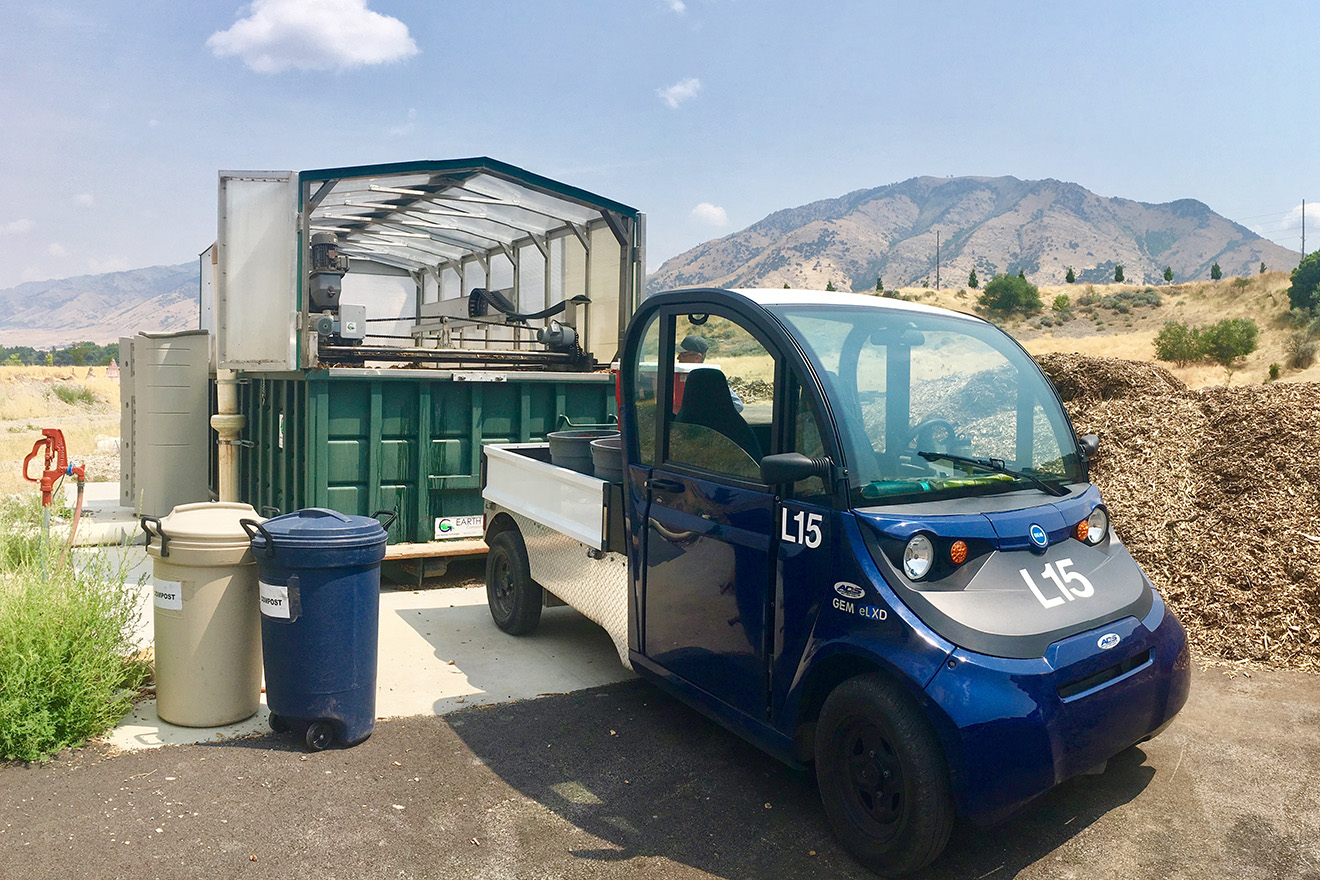Compost
Pre-consumer Compost

Utah State University began composting in January 2015. The project was a joint venture of Dining Services and Facilties with additional funding through a Student Sustainability Grant. The composter processes approximately 32 tons of food per year from the kitchens of USU Dining Services and Nutrition, Dietetics and Food Science. Later the same year, UCAIR and Facilities purchased an electric vehicle to collect food scraps for the composter. The compost is used in campus gardens.
Frequently Asked Questions
How did you choose this type of composter?
A committee compared several composters. Then, the university issued an RFP with specifications. The committee chose the composter that best met the university's needs at the lowest cost.
Which composter do you use?
USU uses an EF-12 Earth Flow Composting System from Green Mountain Technologies. It began operations in January 2015.
Is the system scalable?
No, the university bought a composter larger than the estimated need to allow for growth. If USU needed more capacity, it would need another composter.
How much food does USU compost?
USU composts over 32 tons of food per year. Additional wood chips are composted with the food but not weighed.
What types of food waste do you put in the composter?
Fruit and vegetable scraps, bread, and wood chips are the major components of USU's compost. Fat and protein cannot exceed 20% of the feedstock. Compostable plastics take longer than our usual 21-day compost cycle.
Where do you collect source material for the compost?
USU collects food scraps from the two large dining hall kitchens on campus. These kitchens also do some food preparation for the cafes. The Nutrition, Dietetics and Food Science kitchen, Edith Bowen Elementary Lab School, greenhouse, and wood chips from pruning trees also contribute to the composter.
Does the system require inputs besides the food waste, such as water? How much energy does it use?
Rather than add water, landscape operations increased the food to bulk material ratio, which also increased food capacity. The compost requires up to two gallons of water per a day. The composter is not independently metered for electricity. It has regular mix cycles, and the fan runs all the time. The biofilter helps with odor.
How much time does it take to run the composter?
Collection, loading, unloading, and maintenance take up to 20 hours per week.
When compost comes out, is it ready to use?
Some pineapple tops and avocado pits survive the process. After curing, landscape operations uses the compost on campus.
Post-consumer Compost

Although the university has facilitated post-consumer composting in the past, the projects did not last due to student leaders graduating and contamination. Students launched another pilot project for a compost drop-off in spring 2018. The pilot project depends on the people who use the compost bin to keep it free of trash.
Drop Scraps
The green boxes located near Natural Resources on the Library side and the TSC patio accept compost.
| YES | NO |
|---|---|
| Fruits | Meat |
| Vegetables | Dairy |
| Bread | Whole Eggs |
| Coffee Grounds | Liquids |
| Paper Tea Bags (no tags or staples) | Plastics |
| Egg Shells | "Compostable" Plastics |
| Paper Napkins | Waxed Paper Products |
| Food Wrappers | |
| Fat | |
| Protein |

